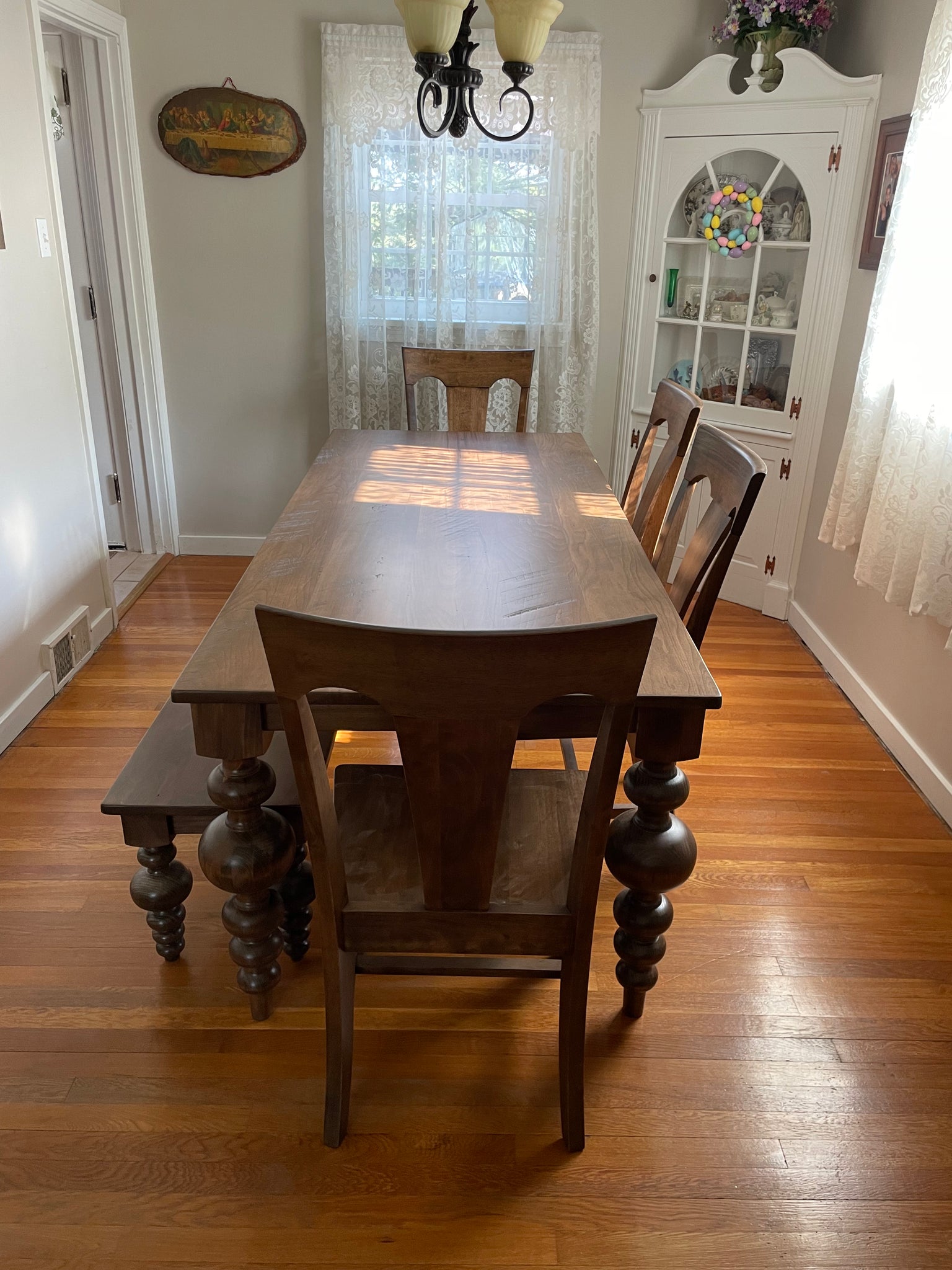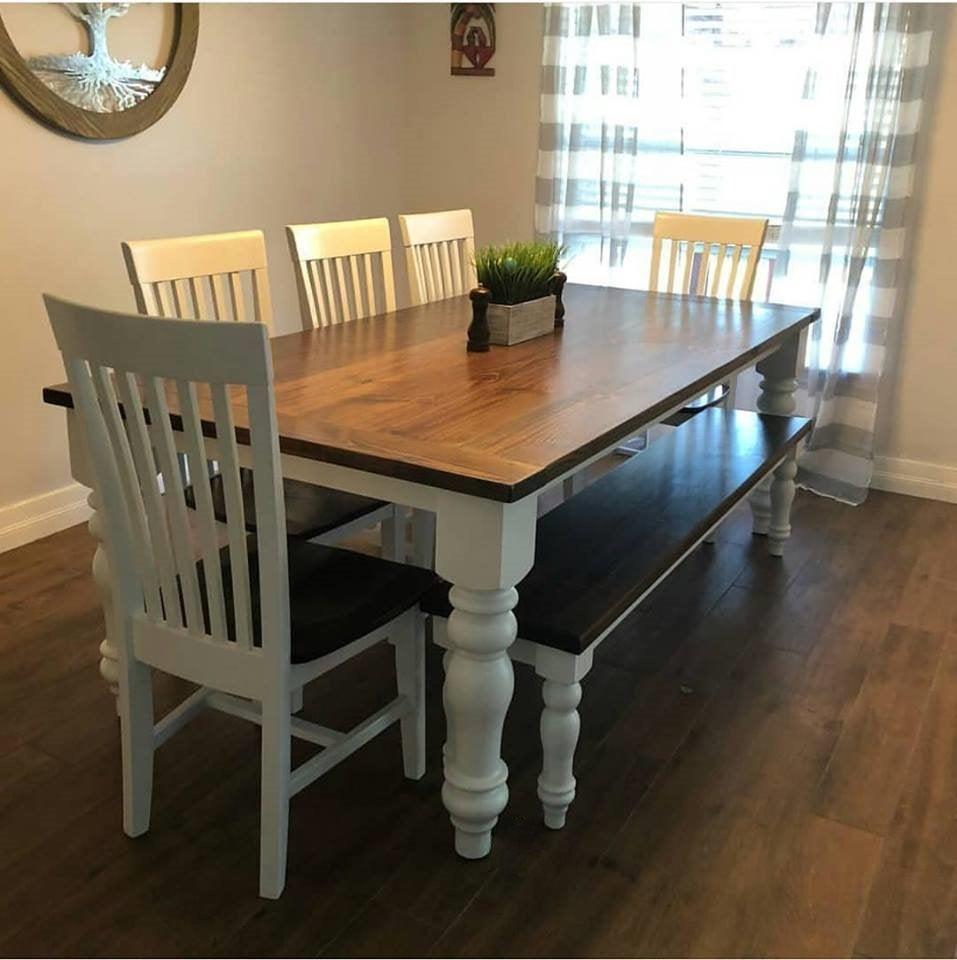Special Dining Room Table Legs to Transform Your Eating Location
Special Dining Room Table Legs to Transform Your Eating Location
Blog Article
Choosing the Perfect Eating Table: What Styles Work Best for Your Home?
Selecting the excellent eating table for your home can be a nuanced process that stabilizes visual appeals and functionality. Whether your area leans towards typical sophistication, modern minimalism, rustic appeal, or industrial trendy, the variety of designs available can satisfy diverse tastes. Each design provides one-of-a-kind benefits and obstacles that can either enhance or interrupt your dining area's consistency. Comprehending just how different materials, forms, and dimensions communicate with your existing style is important. To browse these choices successfully and locate a table that really matches your home, take into consideration the complying with facets thoroughly.
Examining Your Space
Evaluating the dimensions and layout of your dining area is a vital initial step in selecting the ideal table. Begin by determining the length and width of the area, accounting for doorways, windows, and other building attributes that can influence table positioning. This guarantees that your table not just fits however likewise permits comfy motion around it.
Think about the variety of people you usually delight. A table needs to suit your family's day-to-day requirements while using adequate versatility for periodic visitors. Generally of thumb, designate a minimum of 24 inches of table width each to guarantee a comfortable dining experience.
It's also necessary to keep suitable clearance around the table. Ideally, there must be at least 36 inches in between the table side and walls or other furnishings, making it possible for very easy accessibility and activity. For areas where chairs with arms or additional storage space systems like buffets are included, increasing this clearance to 48 inches is advisable.
Illumination and environment play significant duties also. Make certain that your table straightens with existing illumination components or strategy for adequate lights services. This comprehensive spatial analysis warranties that your table not just fits physically yet also harmonizes with your area's general performance and visual.
Popular Table Styles

Standard table commonly include elaborate details, curved legs, and abundant timber coatings, stimulating a feeling of classic sophistication. They are best for homes with traditional design or those wanting to add a touch of refinement to their dining location.
Modern eating tables prioritize simplicity and tidy lines, usually integrating materials like glass and metal. These tables are ideal for modern rooms, supplying a sleek and minimalist appearance that matches minimalist layout viewpoints.
Rustic eating tables, on the other hand, stress all-natural materials and a handmade appearance - dining room table legs. They often include recovered wood and a troubled surface, creating a cozy and inviting ambience. These tables work well in farmhouse-style homes or those looking for a comfortable, natural feel
Industrial eating tables combine raw products such as metal and timber, typically showcasing an utilitarian visual. This style is appropriate for lofts or city spaces, including a touch of sturdy appeal and resilience to the eating experience.
Each style uses distinct benefits, making it vital to pick one that aligns with your home's general design and your personal choices.
Material Options
When picking a table, the selection of material plays a critical role in establishing both the table's aesthetic appeals and capability. Wood, steel, glass, and composite products each deal distinct advantages and challenges, making it vital to straighten the material with your home's decoration and way of living needs.
Wood is an ageless and functional read this article option, offered in ranges such as oak, walnut, and mahogany. Recognized for its sturdiness and heat, timber complements both conventional and contemporary insides. It calls for regular maintenance to prevent scratches and warping.
Metal tables, commonly crafted from stainless-steel, aluminum, or wrought iron, are praised for their modern appeal and robustness. They are particularly suited for commercial or minimalist settings however can be susceptible to dents and may feel cold to the touch.
Glass table bring an air of beauty and openness, ideal for smaller spaces as they create an impression of even more space. While very easy to tidy, glass can be at risk to spots and calls for mindful managing to prevent chips and fractures.
Composite materials, such as MDF and plywood, offer cost-effective and customizable solutions, though they may do not have the long life of all-natural materials. Selecting the right product guarantees your dining table is both a functional asset and an aesthetic joy.
Shape and Size Factors To Consider
After establishing the ideal product for your dining table, the following factor to consider is choosing the best form and dimension to suit your space. The form of the table substantially influences the area's visual and performance. Rectangular tables, one of the most typical form, are excellent for larger spaces and can suit a greater variety of visitors. They likewise enable a much more formal eating experience. On the other hand, rounded tables cultivate a feeling of intimacy and are exceptional for smaller eating areas, urging conversation by removing corners and making everyone really feel similarly included.
Dimension is equally vital and need to be dictated by both the space's measurements and the number of people you prepare to seat regularly. As a policy of thumb, allocate at the very least 24 inches of table size per individual to ensure comfortable eating. In addition, consider the table's clearance area: there must go to least 36 inches between the table edge and the walls or various other furnishings. This ensures that diners can move easily without really feeling cramped. Extending tables offer versatility if you regularly host larger events, supplying added seats when required without inhabiting added room daily. Selecting the ideal form and size ensures both practicality and aesthetic harmony in look these up your dining area.
Matching Your Decoration
Selecting a table that balances with your existing decor is crucial in producing a cohesive and welcoming area. Begin by examining your current indoor design style, whether it be modern, conventional, rustic, or eclectic. The eating table ought to enhance the general aesthetic, not informative post take on it. As an example, a streamlined, minimal table with clean lines is suitable for a contemporary home, while a vintage, luxuriant table fits an extra traditional setup.
Shade and product are equally considerable. If your design includes warm tones and all-natural materials, take into consideration a wooden table to enhance the natural feeling. Conversely, a glass or metal table might be better in a room controlled by amazing shades and industrial elements. Pay interest to the coating, as it needs to mirror other furniture and fixtures to preserve consistency.
Texture plays an important function also. A rough-hewn, reclaimed wood table can add personality to a rustic room, while a sleek marble surface can elevate a luxurious dining area. Consider the scale and percentage of the table in relationship to the space size and existing furniture. A well-matched eating table not just improves visual appeal but additionally improves the general dining experience.

Verdict
Selecting the suitable eating table necessitates careful consideration of space, style, products, form, and dimension. Typical tables enhance traditional insides with rich wood finishes, while modern tables match modern setups with glass and metal.
Report this page